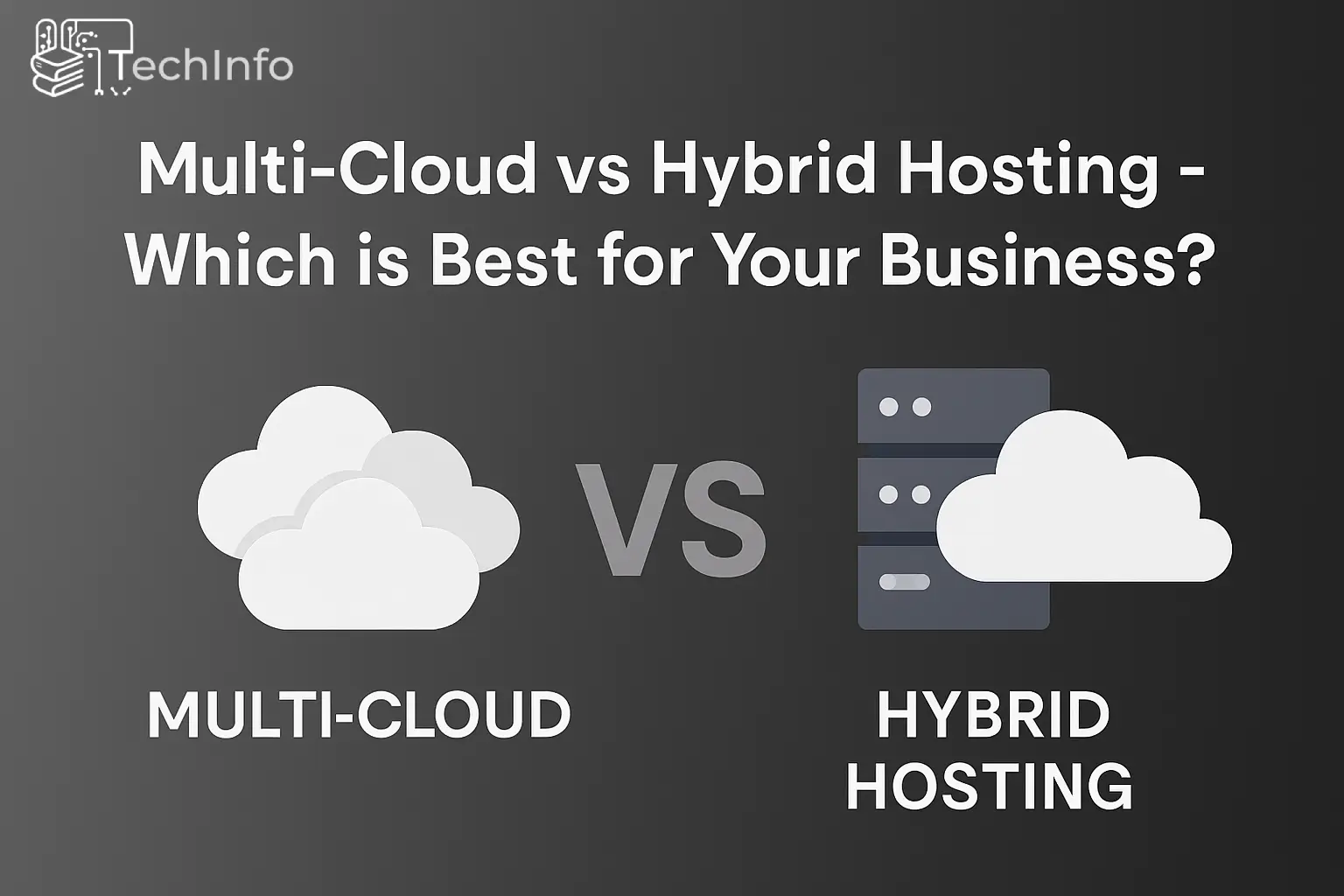Multi-Cloud vs Hybrid Hosting – Which is Best for Your Business?
In 2026, the question for most enterprises is no longer if they should use the cloud, but how they should structure their cloud architecture. As applications become more complex and business demands for security and compliance intensify, a single-cloud approach is often insufficient.
Navigating the Cloud Architecture Landscape
The industry has converged on two dominant, sophisticated strategies for cloud deployment: Multi-Cloud and Hybrid Hosting. While these terms are sometimes used interchangeably, they represent fundamentally different architectural philosophies, each with unique advantages for resilience, cost, and compliance.
Choosing the correct strategy is a critical decision that impacts IT budget, operational complexity, and the delivery of fast and secure hosting technologies. Here is the definitive comparison to help your business select the best model.
Understanding the Two Architectures
Both Multi-Cloud and Hybrid Hosting involve using multiple environments, but their core components and goals differ significantly.
1. Multi-Cloud Strategy (Public + Public)
Definition: A Multi-Cloud architecture involves using two or more distinct public cloud providers (e.g., AWS, Google Cloud, Azure) simultaneously. These clouds are generally not integrated at the deep network level but are used to run different parts of the application portfolio.
Primary Goal: Redundancy and Avoiding Vendor Lock-in.
- Redundancy: If one cloud provider experiences a major, region-wide outage, traffic can be instantly routed to the identical infrastructure running on the second cloud provider.
- Best-of-Breed Services: It allows a business to use the best service from each vendor—for instance, using one provider for their superior AI/ML tools and another for their lower-cost object storage.
2. Hybrid Hosting Strategy (Private + Public)
Definition: Hybrid Hosting, or Hybrid Cloud, combines at least one public cloud environment with a private environment. The private environment can be an on-premises data center or a co-located facility, often leveraging technologies like a dedicated server or the dedicated resources of a VPS, as seen with AI-powered VPS applications. Crucially, these environments are integrated via a secure, high-speed connection.
Primary Goal: Control, Compliance, and Data Locality.
- Data Control: Critical, sensitive, or regulated data (e.g., customer financial information, proprietary algorithms) remains secured within the private environment.
- Scalability: Non-sensitive or high-traffic workloads (e.g., public web front-ends) are “burst” into the public cloud for instant scalability.
Key Comparison Metrics
The best strategy for your business hinges on where your priorities lie among performance, flexibility, and compliance.
| Feature | Multi-Cloud | Hybrid Hosting (Hybrid Cloud) |
| Components | 2+ Public Clouds (e.g., AWS + Azure) | 1 Public Cloud + 1 Private Cloud/On-Premise |
| Primary Goal | Redundancy, Disaster Recovery, Service Optimization | Security, Data Sovereignty, Control |
| Best For | Global SaaS platforms, high-traffic e-commerce | Fintech, Healthcare, Government, highly regulated industries |
| Data Flow | Sensitive data stays private; applications burst to the public cloud as needed. | Fintech, Healthcare, Government, and highly regulated industries |
| Költséghatékonyság | High initial cost; savings through pricing negotiation. | Excellent—leverages existing hardware investment; public cloud used only for burst/scale. |
| Complexity | High (Requires managing two different APIs, consoles, and security protocols). | Medium-High (Requires integrating and securing two distinct environments). |
When to Choose Multi-Cloud
The Multi-Cloud model is the ideal choice for businesses where maximum uptime and resilience are the top priorities, and where data sensitivity is moderate.
- Disaster Recovery is Paramount: A business that cannot afford even an hour of downtime will benefit from having its entire application stack live and ready to go across two distinct providers, guaranteeing business continuity against any single cloud failure.
- Avoiding Vendor Lock-in: By designing an architecture that is cloud-agnostic and uses standard tools (like Kubernetes), businesses gain leverage to negotiate pricing and migrate workloads between providers if a specific vendor service falters.
- Global Performance (Edge Integration): If your application needs to leverage specific geographic regions only available through certain providers, Multi-Cloud gives you the freedom to choose the best network in every part of the world.
When to Choose Hybrid Hosting
Hybrid Hosting is the architectural choice for organizations bound by strict regulatory compliance or those with large, existing investments in private IT infrastructure.
- Regulatory Compliance: Industries like finance and healthcare often have strict mandates requiring customer data to reside only on private, defined, or geographically localized hardware (Data Sovereignty). Hybrid cloud allows the core, compliant data to stay private while the front-end application scales publicly.
- Cost Efficiency and Legacy Systems: Hybrid hosting allows an organization to fully utilize its existing on-premise hardware investment. Only highly variable workloads are sent to the public cloud, leading to superior cost efficiency compared to migrating everything.
- Predictable Workloads with Spikes: If a company has a stable base load but experiences predictable, short-term traffic spikes (e.g., seasonal sales), the private cloud handles the base, and the public cloud handles the “burst” seamlessly, offering maximum reliability.
Conclusion: A Strategic Investment
Both Multi-Cloud and Hybrid Hosting represent advanced, strategic approaches to hosting in 2026. The key is to map your specific business requirements to the corresponding cloud model:
- Choose Multi-Cloud for redundancy, service optimization, and resilience.
- Choose Hybrid Hosting for data control, compliance, and leveraging existing infrastructure.
Regardless of your choice, the successful implementation of these complex strategies relies on expert management and the continuous integration of automation tools. Understanding your workload—is it privacy-sensitive or performance-critical?—is the first step toward building a future-proof architecture. As hosting architecture becomes increasingly complex, the future requires technology that can process data at speeds unimaginable today. Our final blog explores how the role of quantum computing in web hosting will revolutionize every model discussed here.







